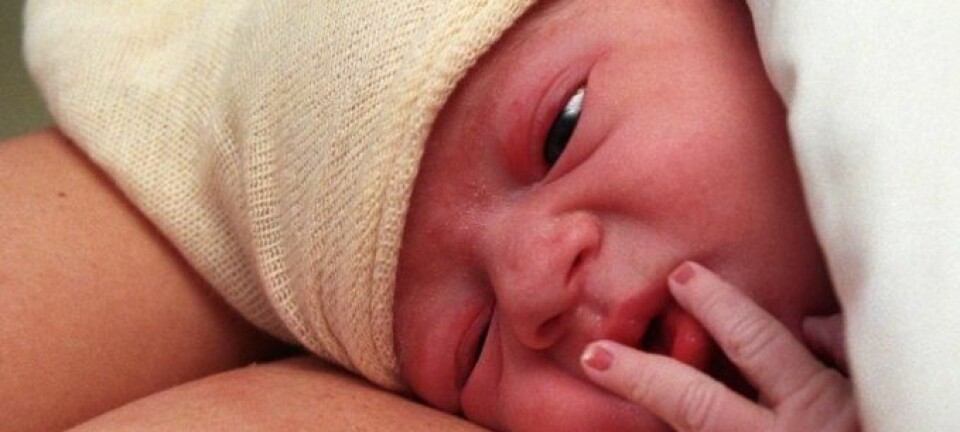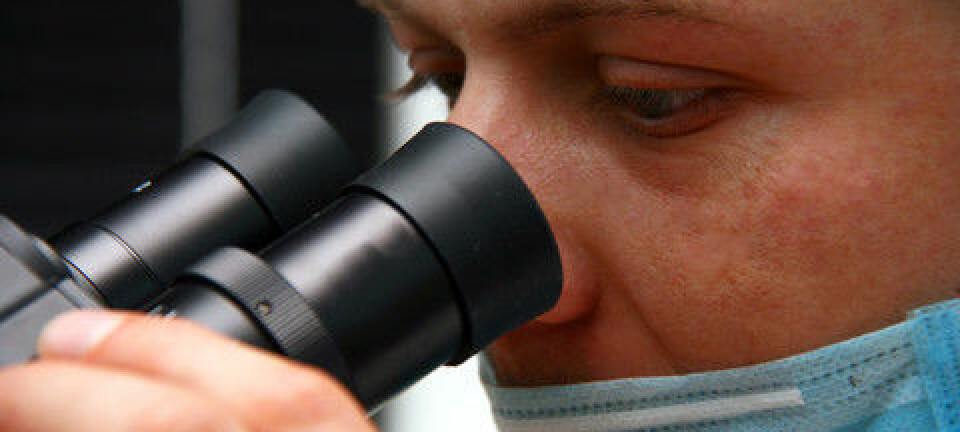
Children of older mothers face greater risk of hereditary disease
Children of older mothers face greater risk of developing diabetes, dementia and heart disease. New research has revealed that this is due to mutations in the mother's ova.
Children of older mothers face a greater risk of suffering a wide range of genetic diseases.
This has been revealed by a new international study with Danish participation.
In the study, scientists discovered that the older a woman is when she gets pregnant, the more harmful mutations she will have in the DNA in her ova.
As a result, children are born facing a greater risk of developing genetic diseases such as certain types of diabetes, blindness, sclerosis, dementia and various types of nerve conditions.
According to one of the scientists involved in the study, the discovery could result in better advice for women who choose to have children later in life.
"This is a an important discovery. In the short term it means that we are better able to advise potential mothers regarding the risk of their offspring developing genetic disease. In the long term, it also gives us a better understanding of why these diseases occur so that we can develop better medicine," explains Professor Rasmus Nielsen from the Natural History Museum of Denmark, the University of Copenhagen and the University of California, Berkeley.
The study has been published in the scientific journal PNAS.
Mutations occur in the unfertilised ova
In the study, the scientists examined whether the age of the mother influences the number of mutations in her child's mitochondrial DNA.
The scientists examined the hereditary mutations by sequencing the mitochondrial DNA of 39 mothers and comparing it with that of the children.
From the difference between the two sets of mitochondrial DNA, the scientists were able to calculate how many mutations had occurred in the DNA of the mitochondria inside the mother's unfertilised ova.
"Our results show that the older a woman is, the greater number mutations have occurred in hers ova, thus increasing the risk of her children being born with various genetic diseases,” says Nielsen.
Mitochondria cannot repair DNA
The reason why the mitochondria of the ova accumulate so many mutations over the years is because the mitochondria are not equipped with the same mechanisms for the repair of DNA as the cell nuclei.
This means that the mitochondria are not as good at repairing their DNA when damage occurs for some reason or other, e.g. spontaneously occurring mutations.
If the repair is flawed, one of the DNA's building blocks may get substituted by another, which in itself is a mutation and potentially a harmful disease-provoking mutation.
Assistant Professor Claus Desler from the Centre for Healthy Ageing at the University of Copenhagen studies mitochondria, but was not involved in the new study.
Desler finds the studies very interesting, although he focuses on another interpretation of its outcome.
"Given that older women have accumulated more mutations in their mitochondrial DNA, one could imagine that the body would get rid of the ova with too many harmful mutations in their mitochondria. This may be part of the explanation as to why older women become infertile,“ says Desler. “The study presents an extremely interesting new perspective, since it can shed light on the reasons infertility among older women,"
Bottleneck increases the risk of disease
Another major result of this research is that it helps to explain how a mother can pass on genetic disease from her mitochondrial DNA to her children, even though she does not suffer from the disease herself.
By studying the frequency of mutations in the children's mitochondrial DNA and comparing this with the mother's, the scientists were able to discern a 1:1 correlation between the number of mitochondria in the mother's cells and the number of mitochondria passed on by the mother to her children via her ova.
Instead, there was a bottleneck which meant that the mother only passed on genetic information from around 30-35 mitochondria of her approximately 200 mitochondria in each cell.
As a result, the ova only pass on a sample of the mother's mitochondrial DNA, which can seriously increase the risk of genetic disease occurring in the child, even though the mother never suffered from them.
Charting DNA
According to Professor Nielsen, the study is a step on the way to more comprehensive screenings for genetic diseases that those we use today.
When people want to know whether they face an increased risk of getting a hereditary disease, their core DNA is screened. Professor Nielsen envisage that within 20 years the mitochondrial DNA will also be routinely screened.
"On the basis of this, we will be able to give parents better advice on the risks of their children developing hereditary disease," says Nielsen.
-----------
Read the original story in Danish on videnskab.dk
Translated by: Hugh Matthews










